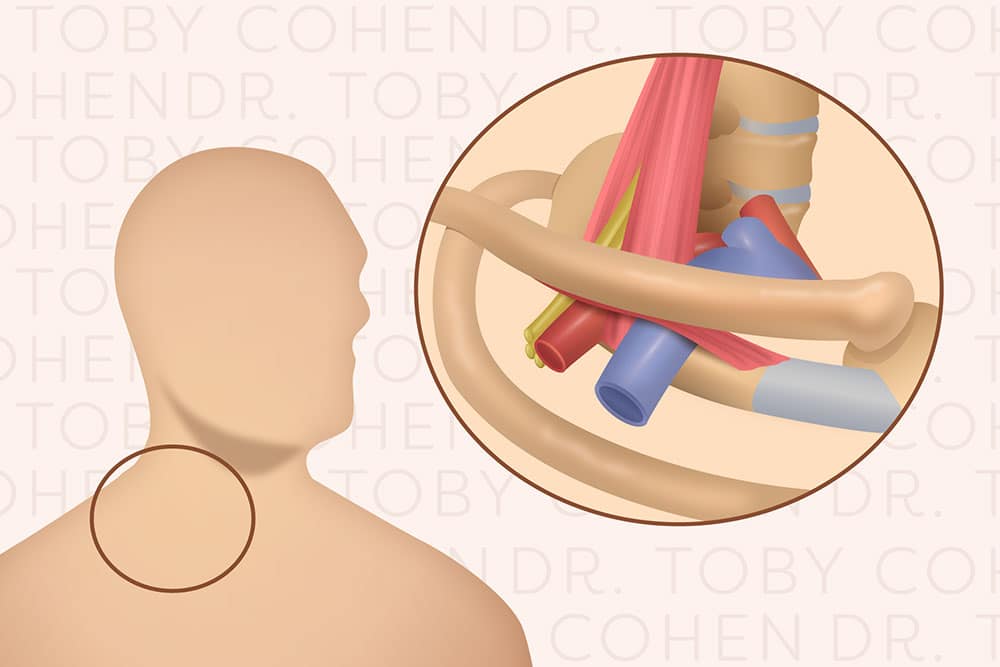Enquire Now
Fill out the form below and we will get back to you as soon as we can.


The thoracic outlet lies immediately below your collarbone and is the area where major nerves arteries and veins arrive into the upper arm. Any of these structures can be compressed by extra bone, nerve or muscle narrowing this area down. In some cases, trauma to the head, neck or arm can cause the same narrowing of this space. It is divided into Neurogenic, Venous, Arterial or Traumatic. For more detailed information please visit the Cleveland Clinic’s website by clicking here.
Thoracic outlet syndrome is caused when the nerves, arteries or veins in the space between your first rib and collarbone become compressed.


The symptoms depend on what structure is compressed:
Neurogenic – this is the most common and can present in a number of different ways, however the most common symptom is numbness and tingling into the 4th and 5th
Venous – the narrowing of this can cause swelling of the upper arm when exercising.
Arterial – often presents with coolness of the arm due to compression of the artery when doing activities above your head. In some cases, the arterial wall can be weakened and an aneurysm can form which can be felt as a lump above the collarbone.
Traumatic – this usually involves some trauma to the head, neck or arm which causes spasm in the muscles below the clavicle. This narrows the space and causes weakness and pins and needles into 4th and 5th fingers.
The main causes of thoracic outlet are either anatomical with an extra rib or band of tissue compressing the structures or it can also result from trauma from a car accident or the trauma of repetitive stress caused by job or sports to the arm or neck.


Diagnosis depends on clinical history and examination. Once the diagnosis is suspected, then it is confirmed with radiological investigations. The patients usually have a duplex ultrasound, nerve conduction test and MRA of the thoracic outlet.
It depends what the underlying cause of the thoracic outlet. If there is an anatomical problem compressing the structures the most likely outcome will be surgery. However, if it arises from trauma or repetitive stress conservative management is the best option.
Botox injections into the scalenous anterior and medius coupled with physiotherapy and functional training. This causes the muscles under the collarbone to relax and create more space in the thoracic outlet. Botox injections usually last for six months. During this time you will undergo rehabilitation to strengthen the surrounding muscles.
If conservative therapy fails, we can offer a cervical rib resection. An incision is performed immediately above the clavicle and a section of the first rib is removed. This creates more space in the thoracic outlet and relieves the symptoms. The procedure usually takes about one and a half hours, and you can go home the following day.
The best approach to suit your particular needs will be discussed in detail between yourself and Doctor Cohen before a decision is made. Either option will involve a significant amount of functional rehabilitation.